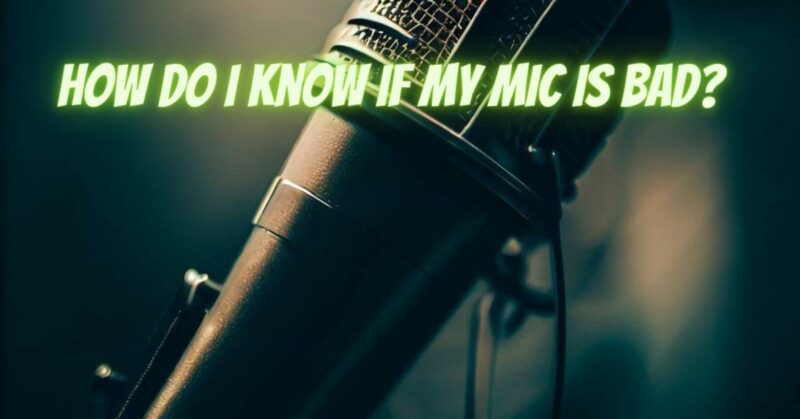A faulty microphone can significantly hinder your ability to capture clear audio and can be frustrating, especially during critical recording sessions or live performances. Understanding the signs of a bad microphone can help you identify and address issues promptly, ensuring optimal audio quality. In this article, we discuss common indicators that your microphone may be experiencing problems and provide guidance on how to identify if your mic is indeed faulty.
- No Sound or Intermittent Sound:
The most apparent sign of a bad microphone is the absence of sound or intermittent sound output. If you’re not getting any audio signal from the microphone, even when it’s properly connected and powered, it could indicate a fault.
Solution: Check all connections, including cables and connectors, to ensure they are securely plugged in. Test the microphone with different devices or audio interfaces to rule out compatibility issues. If the microphone consistently fails to produce sound, it may require further inspection or repair.
- Distorted or Muffled Sound:
A bad microphone may produce distorted or muffled sound, making the audio unclear and difficult to understand. Distortion can manifest as harsh, clipped, or fuzzy sounds, while muffling can result in a loss of clarity and reduced intelligibility.
Solution: Ensure that the microphone is positioned correctly and not too close to the sound source. Adjust input gain levels and monitor for clipping or distortion. Test the microphone with different cables or connectors to rule out issues with the audio chain. If the distorted or muffled sound persists, it may indicate a problem with the microphone itself.
- Excessive Background Noise:
If your microphone consistently picks up excessive background noise, even in controlled environments, it could indicate a faulty mic. This may include unwanted buzzing, humming, or hissing sounds that are unrelated to the intended audio source.
Solution: Check for any nearby sources of electrical interference, such as electronic devices, power cables, or poor grounding. Use shielded cables and employ noise reduction techniques to minimize unwanted noise. If the background noise remains excessive, it might be a sign of a defective microphone.
- Inconsistent Output or Dropouts:
A problematic microphone may exhibit inconsistent audio output or sudden dropouts during recordings or performances. This can result in unpredictable interruptions or gaps in the audio signal.
Solution: Test the microphone with different devices or audio interfaces to rule out compatibility issues. Check for loose connections or faulty cables that could cause intermittent signal loss. If the microphone consistently exhibits inconsistent output or dropouts, it may require professional inspection or repair.
- Physical Damage or Wear:
Visible physical damage or wear on the microphone, such as dents, cracks, loose parts, or frayed cables, can indicate a mic in poor condition. Physical damage can impact the microphone’s functionality and lead to audio issues.
Solution: Inspect the microphone carefully for any visible signs of damage or wear. Pay particular attention to the microphone capsule, connectors, and cables. If you notice significant physical damage, it may be necessary to replace or repair the microphone.
Conclusion:
Identifying a faulty microphone is crucial for maintaining high-quality audio recordings and performances. By being aware of signs such as no sound, distorted/muffled sound, excessive background noise, inconsistent output, or physical damage, you can determine if your microphone requires attention or potential repair. Troubleshoot connections, test with different devices, and seek professional assistance if needed to ensure optimal microphone performance and audio quality.


